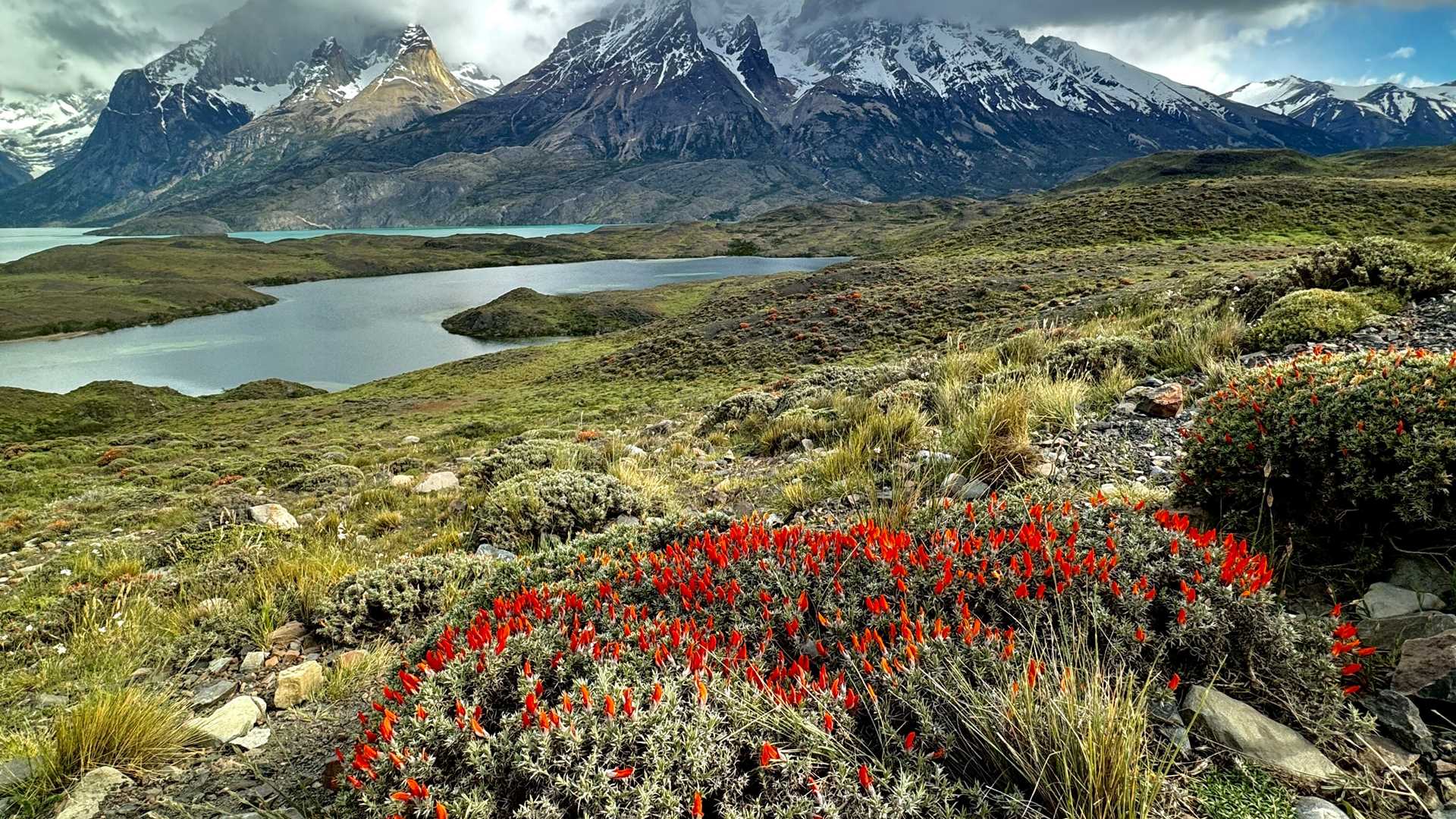If we were to have only one day with good weather, this is the one that would have the biggest payoff. Lucky for everyone on board National Geographic Resolution, the dynamic weather of Chilean Patagonia was in our favor, and we had incredible views of the torres (towers) and cuernos (horns) during our visit to Torres del Paine National Park. This is one of the most beautiful and iconic mountain ranges on Earth, and it served as a gorgeous backdrop for the day’s hiking, sightseeing, and dining. To top it all off, some of the guests spotted a puma, the park’s most famous inhabitant.
- Daily Expedition Reports
- 20 Nov 2023
Torres del Paine National Park, Chile, 11/20/2023, National Geographic Resolution
- Aboard the National Geographic Resolution
- Antarctica
Justin Hofman, Undersea Specialist
Justin started working on expedition ships in 2008 after realizing that his new career in scientific illustration meant too much time inside. He has since worked aboard expedition vessels in numerous countries and filmed wildlife for major production...
Read MoreShare Report
Antarctica and Patagonia: Legendary Ice and Epic Fjords
VIEW ITINERARYRelated Reports
11/14/2021
Read
National Geographic Explorer
LeMaire Channel and Pleneau Island
Morning began early on National Geographic Explorer with a beautiful cruise through the LeMaire channel. As the ship passed beyond the southern end of the channel, it was surrounded by ice with spectacular views of sea ice and icebergs. The Zodiacs were soon lowered to take everyone ashore at Pleneau Island for up close encounters with penguins. In the afternoon, Zodiacs zipped around grounded icebergs as everyone was treated to a cruise through monumental ice sculptures created by glaciers. The day ended as it began, with a trip through the always awe-inspiring LeMaire channel.
11/9/2021
Read
National Geographic Explorer
Jackson Bay, Karukinka Natural Park & Canal San Gabriel
During a rare, perfectly still and windless morning, we landed at Jackson Bay, in Admiralty Sound to visit the most remote section of Karukinka Natural Park, a private protected area managed by the Wildlife Conservation Society. At 330 hectares, this area protects some of the southernmost forests, grasslands and peatlands of the planet together with a vast array of wildlife including several endemic bird species and a colony of breeding elephant seals. We hiked through large stands of primeval forest to get to a waterfall that drains the overflow of some alpine glaciers still blanketing the peaks that flank the valley we walked toward.







